Life is a journey
喜ばしいことに、野山が色付くにつれて世の中のコロナの感染者数も激減し、世の中は徐々にではありますが活気を取り戻し始めてきています。延期に次ぐ延期で大きくずれ込んでいた修学旅行なども、ここに来て一斉に催行され、短時間で誰でも見て回れるような観光地は修学旅行生や観光客で賑わっています。
I am happy to see that the number of people infected with covit-19 in Japan has decreased drastically as the mountains and fields change color, and the world is slowly starting to come back to life. School excursions, which had been postponed many times, are now being held all at once, and tourist spots that anyone can visit in a short time are crowded with students and tourists.
とはいえリモートワークは続いており、現在もニューノーマルなライフスタイルが推奨されていますので、まだまだ時間に融通の効く方も多いのではないでしょうか?そこで今回は、そんな方に今だからこそ!な場所をお勧めしたいと思います。
However, working from home continues and the new normal lifestyle is still encouraged today, so there are probably many people who still have flexible hours.
So this time, I’d like to recommend a place for those people to go now!
2004年に、ユネスコの世界文化遺産にも登録された紀伊山地の霊場と参詣道。熊野古道の歴史は平安時代まで遡るほど古く、古来より先人たちが歩んだ巡礼の路で「熊野三山」と呼ばれる3つの大社へと繋がる参詣道である。
In 2004, the sacred sites and pilgrimage routes in the Kii Mountain Range were registered as a UNESCO World Heritage Site. The history of the Kumano Kodo dates back to the Heian period (794-1185), and it is a pilgrimage route that has been followed by our ancestors since ancient times, leading to the three major shrines known as the “Kumano Sanzan”.
その3つとは、
The three are,
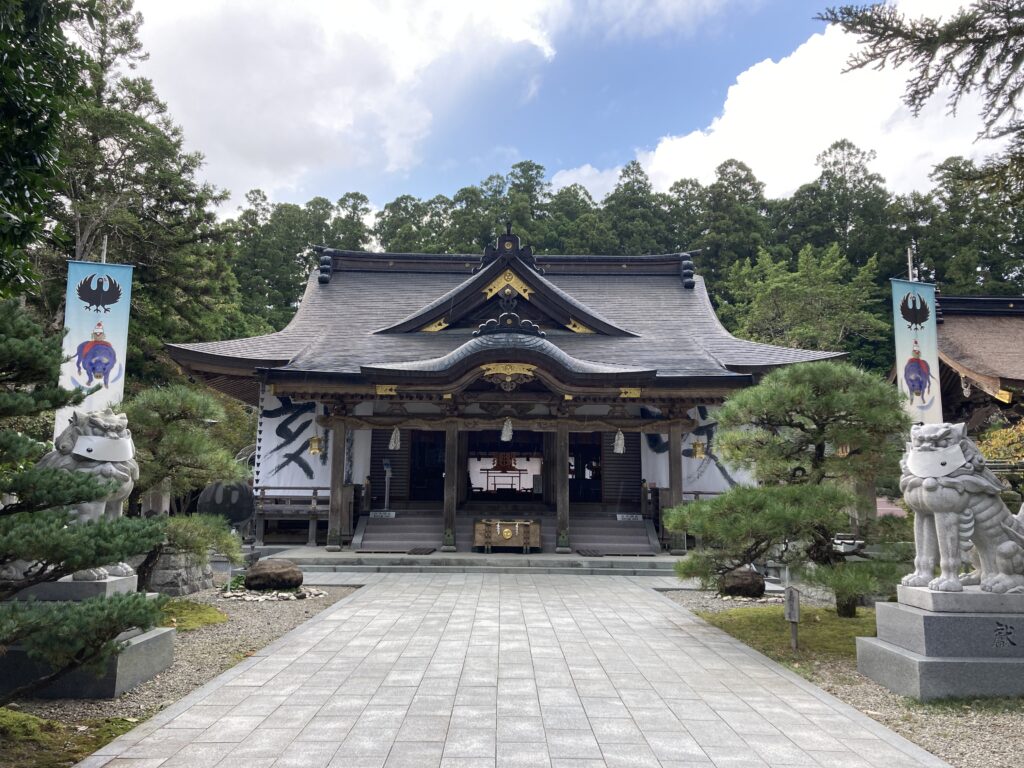
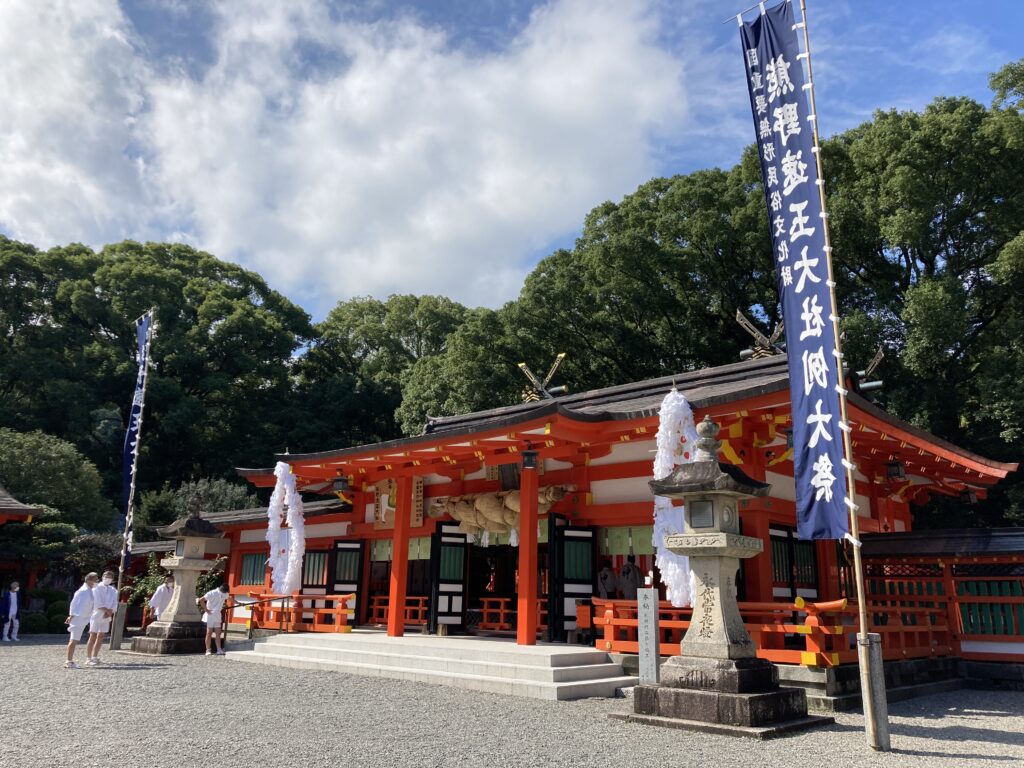
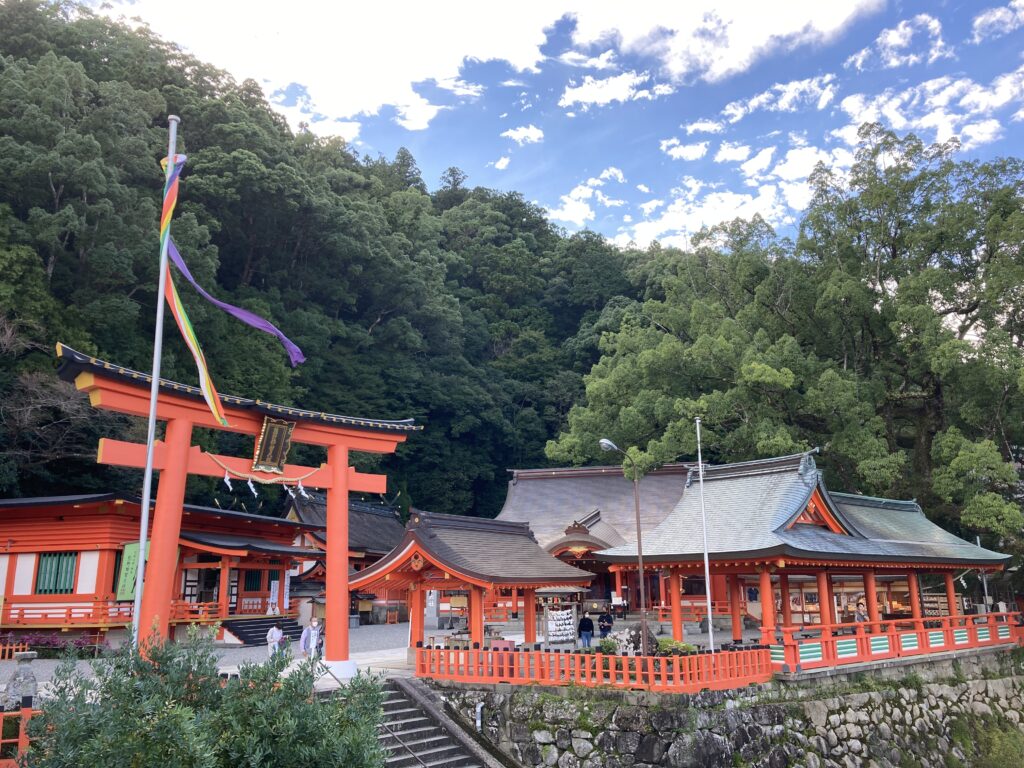
日本全国に数多く存在する熊野神社の総本社の3つの神社だ。
These are the three main shrines of the many Kumano shrines that exist throughout Japan.
これらの三山に参詣することを「熊野詣」といい、先人たちは大昔からこの路を歩んできた。 古代から中世にかけ、熊野三山の信仰が高まり、上皇・女院から庶民にいたるまで、男女を問わず、または貴賤や身分の上下を問わず、誰もが熊野を目指して大勢やってきた。その様子は蟻の行進になぞらえて「蟻の熊野詣」と呼ばれていたほどだそう。
A visit to these three mountains is called “Kumano-moude,” and our ancestors have walked this path since ancient times. From ancient times to the Middle Ages, faith in the three mountains of Kumano grew, and people of all genders and status, from emperors and princesses to commoners, came to Kumano in large numbers. It is said that this was called “ant processions” in analogy to the march of ants.
熊野古道には、「中辺路」「伊勢路」「小辺路」「紀伊路」「大辺路」という5つのルートが存在する。
There are five routes in the Kumano Kodo: Nakahechi, Iseji, Kohechi, Kiiji, and Ohechi.
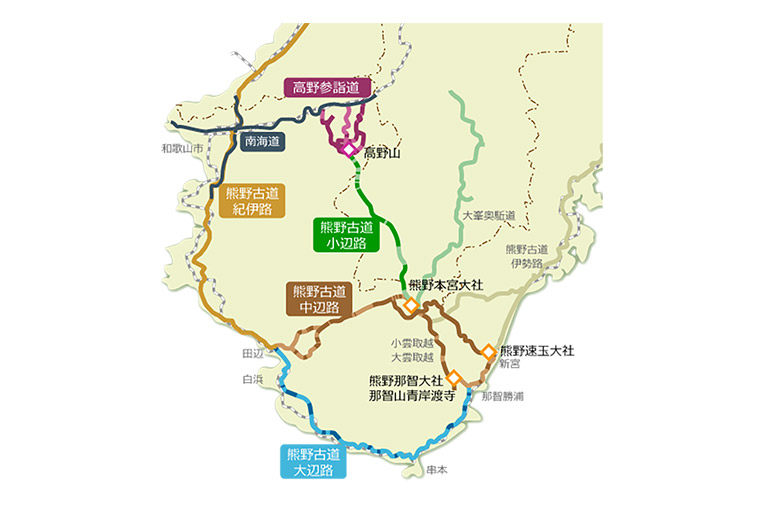
紀伊田辺からはじまり、熊野本宮大社へと向かうルート。このルートを使い何度も歩いたことでよく知られているのが後鳥羽天皇や藤原定家、和泉式部もこの路を歩んだといわれている。
The route starts from Kii Tanabe and goes to Kumano Hongu Taisha. It is said that Emperor Gotoba, Sadaie Fujiwara, and Shikibu Izumi also walked this route many times.
伊勢神宮からはじまり、熊野三山それぞれの大社へと向かうルート。いくつもの峠道をこえる路。
The route starts from Ise Jingu Shrine and goes to each of the three Kumano shrines. The route crosses many mountain passes.
高野山と熊野本宮大社をつなぐ、およそ70kmの参詣道。高野山の奥から山脈を縦断していくルート。
A 70-km pilgrimage route connecting Koyasan and Kumano Hongu Taisha. The route traverses the mountain range from the back of Koyasan.
京都の城南宮を起点に大阪府堺市を経由して紀伊田辺まで、中辺路に合流し熊野三山へと繋がるルート。沿線の各所には由緒ある寺や趣ある建物が並んでいる。
The route starts from Jonangu in Kyoto, goes through Sakai City, Osaka Prefecture to Kii Tanabe, and then joins Nakahechi to connect to Kumano Sanzan. Along the route, there are many historic temples and quaint buildings.
和歌山県田辺市を海沿いに南下し、沿線の寺や社だけでなく海沿いならではの景観を楽しむことができる参詣路である。
This is a pilgrimage route that runs southward along the sea in Tanabe City, Wakayama Prefecture, where you can enjoy not only the temples and shrines along the route, but also the unique scenery along the sea.
その中で今回、我々が選んだのは中辺路。奥深い自然豊かな紀伊山地の山々を越えていく道のりだが、平安時代から鎌倉時代には皇族や貴族の公式参詣道として100回以上も熊野詣(熊野御幸)に使われた道で、そのことから庶民にも人気が高く、最も多く歩かれてきた道でもある。そこで、その名残や雰囲気を楽しみながら、同じ道を歩いた古来の人々の足跡に自らの一歩一歩を重ね、悠久の時に思いを馳せながら三山へ参詣することにした。
This time, we chose the Nakahechi route.
It is a route that crosses the mountains of the Kii Mountain Range, which are rich in deep nature, and was used more than 100 times as an official pilgrimage route by the imperial family and nobility from the Heian to Kamakura periods, making it the most popular and walked path among the common people.
健脚の方が単純にその行程全てを踏破するだけなら必要な日数は4泊5日程度だが、今回は各所をしっかり観光しながら、この歩きの旅を辛いものではなく最後まで余裕を持って楽しむために、7泊8日の日程を確保してのぞむ。
If you are a strong walker and simply want to go through the entire route, you will need about 4 nights and 5 days, but for this trip, we decided to set aside 7 nights and 8 days so that we can enjoy this walking trip to the end rather than having a hard time while sightseeing each place.
中辺路では山深く長い道のりをそれなりの時間をかけて歩くことになるのだが、その道中に集落などは決して多くない。よって寝食を確保するための施設や宿も圧倒的に少ない。
併せてコロナ禍以前にインバウンドが押し寄せていた数年前は、日本の文化と自然を十二分に満喫できる熊野古道は非常に人気が高く、それこそ蟻の熊野詣のような状態で、宿泊施設は半年先まで全て抑えられているという状態が続いていた。
In Nakahechi, we had to walk a long way deep into the mountains for a considerable amount of time, but there were not many villages along the way, and therefore, there are far fewer facilities and lodgings to secure food and sleep.
At the same time, a few years ago, before the covit-19 epidemic, when inbound tourists were flooding into Japan, Kumano Kodo, where you can fully enjoy Japanese culture and nature, was very popular. That’s exactly what it was like “ant processions”, where all accommodations were being held back for the next six months.
しかし良いのか悪いのか、怪我の功名とでもいうべきか、コロナ禍の今現在は宿の確保が非常にしやすい状況になっている。以前は4泊以上もの宿泊予約を希望日程で全て確保するということは至難の技だったことを考えれば、海外からの旅行客の受け入れ規制が緩和されるまでの今このタイミングこそ、熊野古道を歩く絶好のチャンスと言っていいだろう。
However, whether it’s a good thing or a bad thing, now that covit-19 pandemic, it has become very easy to reserve accommodations.
Considering the fact that it used to be extremely difficult to secure a reservation for more than four nights on a desired date, this is the perfect time to walk the Kumano Kodo until the restrictions on accepting tourists from overseas are relaxed.
我々の行程はこうだ。
Here’s our itinerary.
1日目 羽田空港ー南紀白浜空港、バスで紀伊田辺。
2日目 紀伊田辺ー滝尻王子(バス)、滝尻王子ー近露王子(約13kmの歩き)
3日目 近露王子ー熊野本宮大社(約26kmの歩き)
4日目 熊野本宮大社ー湯の峰温泉 (約4kmの歩き)
5日目 湯の峰温泉ー小口(約16kmの歩き)
6日目 小口ー熊野速玉大社(川舟下り)
7日目 熊野速玉大社ー熊野那智大社(約22kmの歩き)、バスで紀伊勝浦
8日目 紀伊勝浦ー串本(電車)、バスで南紀白浜空港、羽田空港
Day 1 Haneda Airport – Nanki-Shirahama Airport, Kii-Tanabe (by bus).
Day 2 Kii Tanabe – Takijiri Oji (bus), Takijiri Oji – Chikatsuyu Oji (13km walk)
Day 3 Chikatsuyu Oji – Kumano Hongu Taisha (approx. 26 km walk)
Day 4 Kumano Hongu Taisha – Yunomine Onsen (approx. 4km walk)
Day 5 Yunomine Onsen – Oguchi (about 16km walk)
Day 6 Oguchi – Kumano Hayatama Taisha (river boat ride)
Day 7 Kumano Hayatama Taisha – Kumano Nachi Taisha (approx. 22 km walk), Kii Katsuura (bus)
Day 8 Kii-Katsuura – Kushimoto (train), Nanki-Shirahama Airport (bus), Haneda Airport
長距離、長時間の歩きでの疲労を考え移動を少なくし、身体と足をしっかり休める日を合間あいまに入れることで心と体を回復させ余裕を持たせる作戦。それにより、要所要所でしっかりと観光する時間も確保できる。それぞれの日の目的地での宿を事前に予約し、雨の多い紀伊山地のために雨対策、距離の長い歩行のためにヘッドライトや応急救護の準備などをしっかりと備えた。
Considering the fatigue of walking long distances and for long periods of time, the plan was to reduce the amount of travel and allow the body and mind to recover and have more time in between days to rest the body and legs.
This will allow us to have more time for sightseeing at important places. We booked lodgings for each day’s destination in advance, prepared for the rainy weather in the Kii Mountain Range, and prepared headlamps and first aid kits for the long walks.
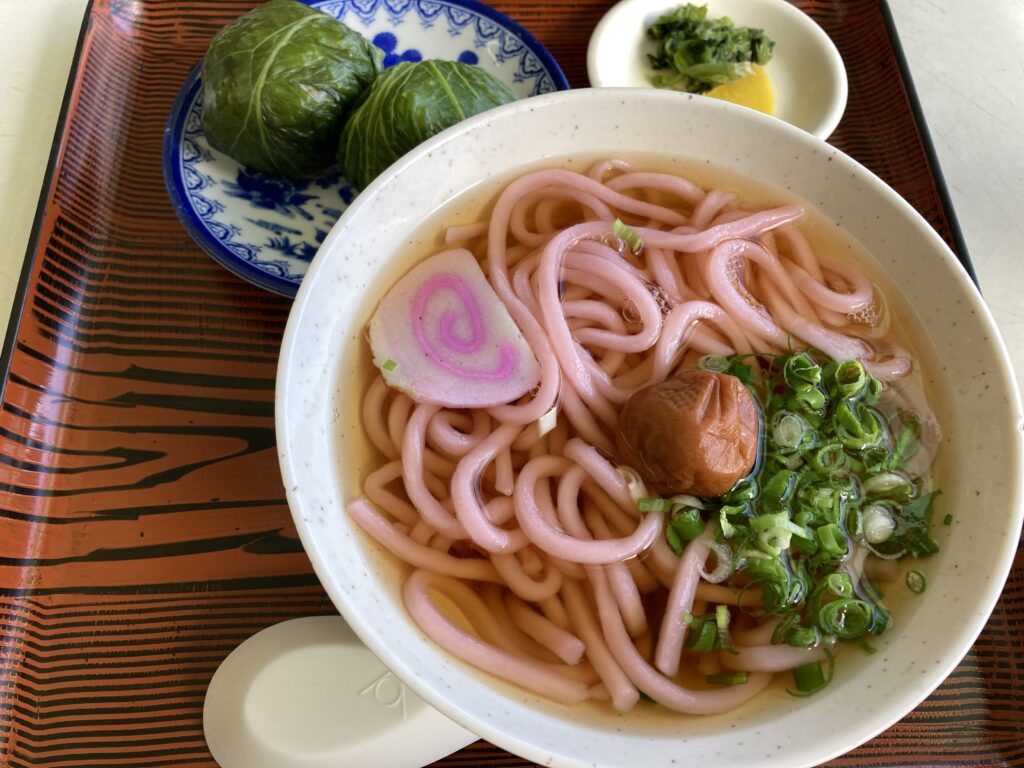
旅の初日は羽田から南紀白浜に飛び、紀伊田辺まで移動し、情報収集。翌日からの長距離、長時間の歩きに備えて行動食などの準備もする。歩きながら補給する行動食も、できればその地元を感じられるものが良いので、いつもいくつかを現地で手に入れるようにしている。レンタサイクルをして紀伊田辺の街を散策&観光しながら老舗の菓子店で地元に愛されている銘菓など入手し、「南紀と言えば」の梅を、甘めのものから塩っぱいものまでいくつか購入する。
On the first day of the trip, we flew from Haneda to Nanki-Shirahama, and we traveled to Kii-Tanabe to gather information.The next day, I prepared food for the long distance and long walk.
I always try to get some of the local food I need to eat while walking, because it is better to have something local.
While strolling around the city of Kii-Tanabe on a rented bicycle, I picked up some local sweets at a long-established sweets store, and bought some ” Nanki is famous for” plums, both sweet and salty.
居酒屋で土地のうまい飯をしっかり食べ英気を養い(うますぎて少々飲みすぎたが・・・)しっかり眠って翌朝からの長距離の山道に備えた。さぁ、いよいよ翌日から熊野古道へ。
We ate good local food at a izakaya (Japanese style pub) and nourished our spirits (although we drank a little too much), slept well and prepared for the long mountain road from the next morning.Now it was time to start the Kumano Kodo the next day.
つづく・・・
To be continued…
熊野古道ではないけれど白浜や田辺の街だけでも、観光には充分な見どころが揃っている。そこで今回立ち寄ったところをザッとご紹介。
Although it is not the Kumano Kodo, the towns of Shirahama and Tanabe alone have enough attractions for sightseeing. Here is a quick introduction of the places we stopped by this time.
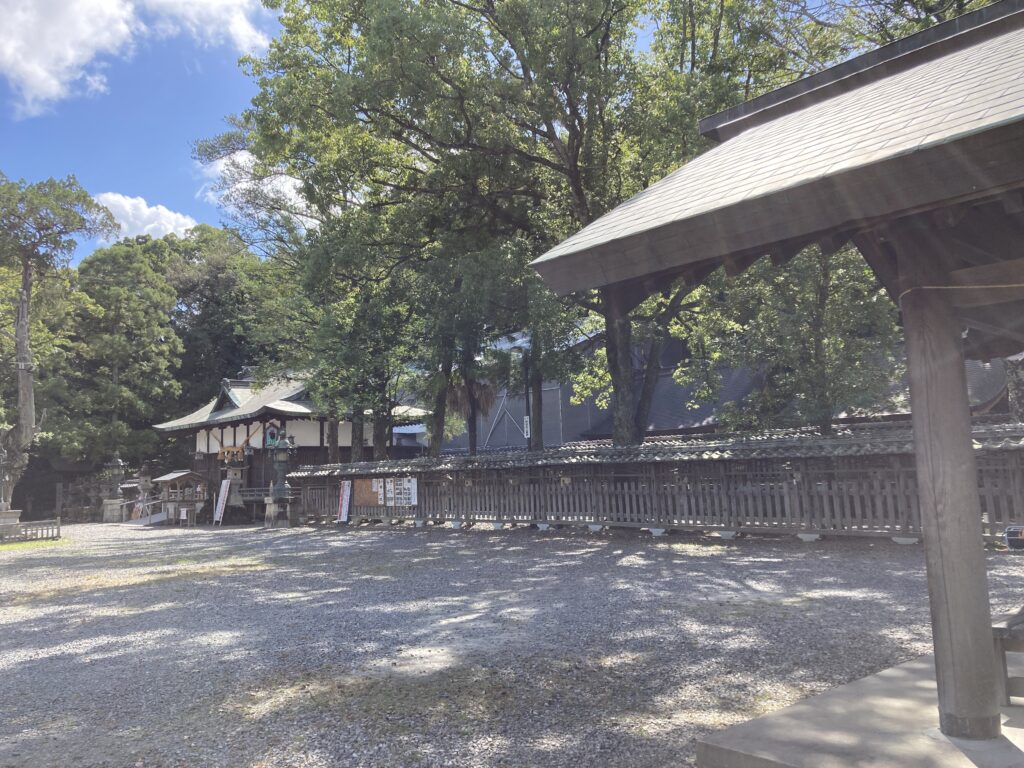
2016年に世界遺産に追加登録された神社で、熊野参詣の折には鬪雞神社に参拝して心願成就を祈願したそう。三山参詣が難しい人にはにここの参詣をもってして替えたという伝承もあり、熊野三山(熊野本宮大社、熊野速玉大社、熊野那智大社)の別宮的存在として熊野信仰の一翼を担っていたんだとか。
The shrine was added to the World Heritage List in 2016, and people used to visit here to pray for the fulfillment of their heart’s desire during their pilgrimage to Kumano.
There is also a story that people who could not make it to the three mountains could make a pilgrimage to this shrine, and as a separate shrine of the three Kumano mountains, it played a part in the Kumano faith.

日本のエコロジストの先駆けとも言われる近代日本の博物学、民俗学に大きな影響を与え、植物学の世界的な研究者としても知られる南方熊楠の墓や世界140の国と地域で愛好される「合気道」の創始者、植芝盛平の墓もある弘法大師が開創したとされるお寺。
The temple is said to have been founded by Kobo Daishi, and has the grave of Minakata Kumagusu, a world-renowned botanist and a major influence on modern Japanese natural history and folklore, who is said to be the pioneer of Japanese ecologists, as well as the grave of Morihei Ueshiba, the founder of Aikido, which is loved in 140 countries and regions around the world.

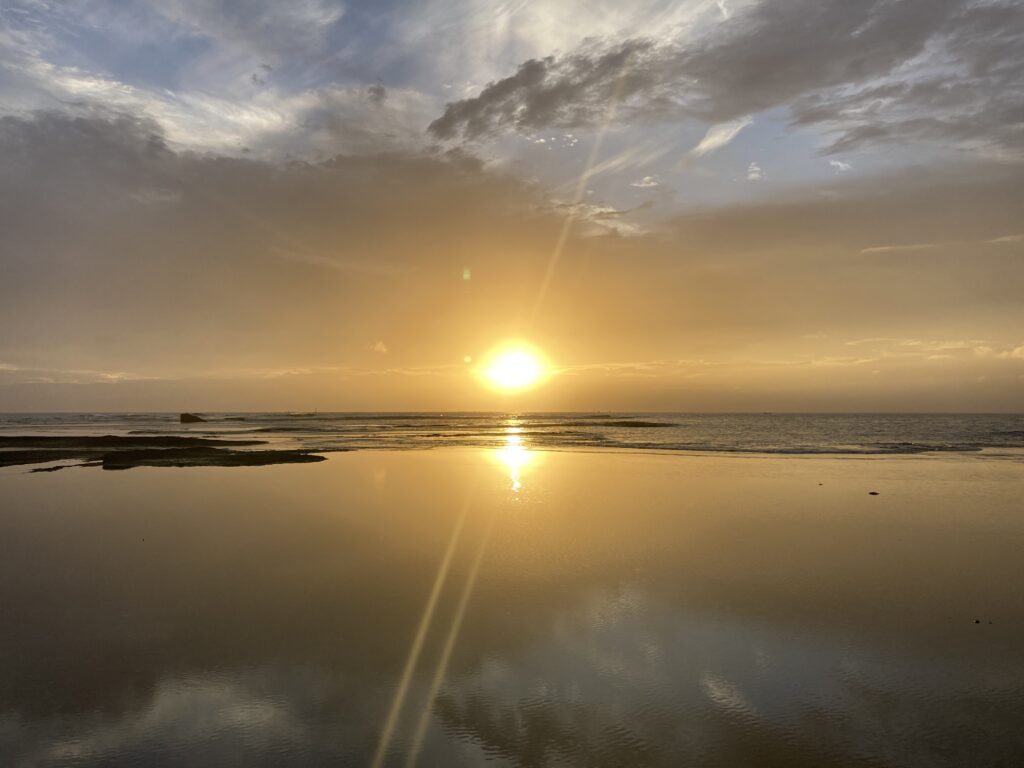
条件が揃うとウユニ塩湖のような景色が見られ、SNS映えする絶景として話題の天神崎。僕たちの訪れたタイミングはまさにその絶景がバッチリと見られ、上からも下からも光に包まれるものすごい体験だった。
Cape Tenjinzaki is a popular spot for its spectacular view that looks like Uyuni Salt Lake when the conditions are right. The timing of our visit was perfect, and it was an amazing experience to be surrounded by light from above and below.

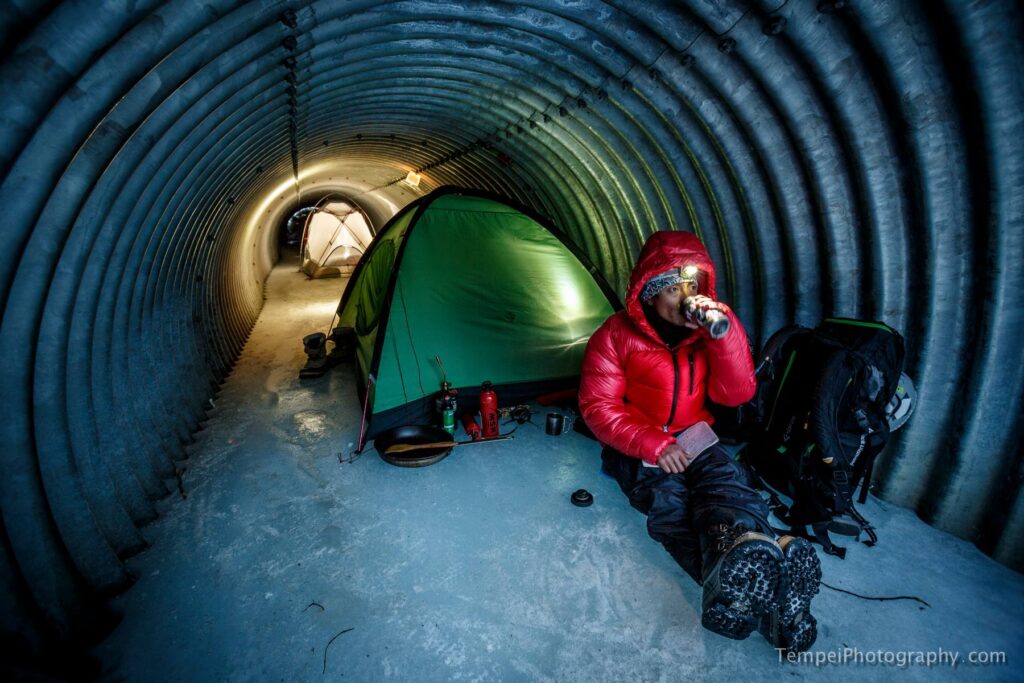
中島 力
Riki Nakajima
Blog:https://ameblo.jp/rikistyle/
Instagram:https://www.instagram.com/rikinakajima/
Guide Company HP for Winter :https://rikijg.com/jp/
Guide Company HP for Green Season :https://www.rikijapowguide.com
1981年、滋賀県出身。 カナダ・ウィスラーに留学中、CSIAインストラクター資格と、日本人初となるCFSAフリースキーインストラクター資格を取得。帰国後は数々のフリースキー大会への参加に加えて、バックカントリーでの滑走へも活動の場を広げた。ここ数年は、北海道トマムスキー場をベースに、スキーのレッスンやガイド、イベント運営、MCなどその動きは多岐にわたっている。また、毎年春になると海外へとわたり、アドベンチャー要素の高い山行を継続的にトライし、その模様を映像や写真、イベントで表現している。 ガイドカンパニー「RIKI JAPOW GUIDE」代表。
Born in Shiga Prefecture in 1981. While studying in Whistler, Canada, he became a certified CSIA instructor and the first Japanese freeski instructor to receive the CFSA freeski instructor certification. After returning to Japan, he expanded his activities to include backcountry skiing in addition to participating in numerous freeskiing competitions. For the past few years, he has been working at Tomamu Ski Resort in Hokkaido, giving ski lessons, guiding, managing events, and acting as an MC. He also travels abroad every spring to try his hand at high adventure mountain climbing, and expresses his experiences through videos, photos, and events. He is the representative of the guide company “RIKI JAPOW GUIDE”.